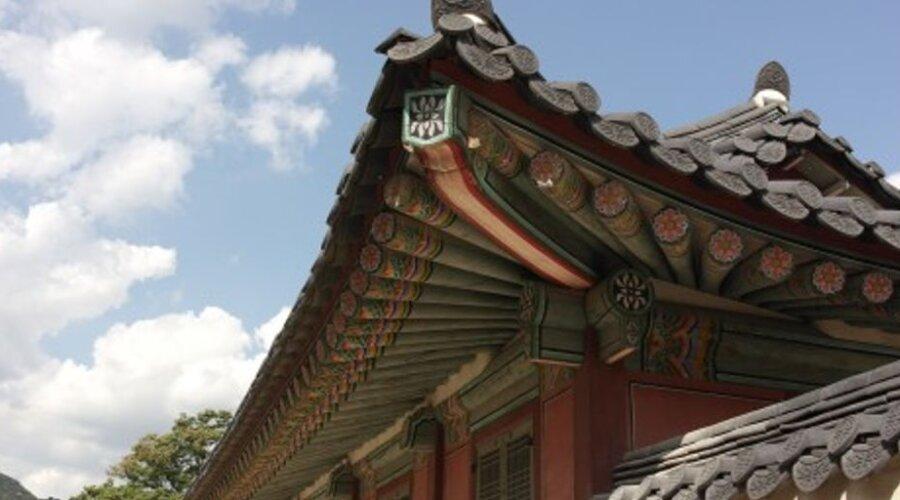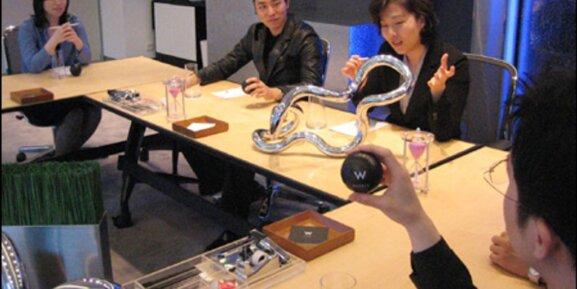“Local Legends: Iconic Landmarks That Define South Korea”
South Korea, a land where ancient traditions blend seamlessly with modern advancements, is home to some of the most iconic landmarks in the world. From historical palaces to natural wonders, each site tells a unique story that contributes to the rich tapestry of Korean culture. This article explores some of the most significant landmarks that define South Korea, offering insights into their historical, cultural, and natural significance.
Key Takeaways
- Gyeongbokgung Palace offers a glimpse into Korea’s royal history with its grand architecture and ceremonial traditions.
- The DMZ serves as a poignant reminder of Korea’s division, featuring unique sites like the Third Infiltration Tunnel and the Joint Security Area.
- N-Seoul Tower provides panoramic views of Seoul and is a popular spot for romantic gestures like love locks.
- Jeongbang Waterfall, one of the few waterfalls in the world that falls directly into the sea, is a must-visit natural wonder.
- Bukchon Hanok Village offers a journey back in time with its well-preserved traditional houses and rich cultural experiences.
Gyeongbokgung Palace: A Walk Through Royal History
Exploring the Grounds
Gyeongbokgung Palace, built in 1395, is often referred to as the Northern Palace due to its location. Much of the palace has remained intact over the centuries, and in particular, the Gyeonghoeru Pavilion and the pond around Hyangwonjeong Pavilion are amongst the best-preserved areas. When visiting the palace, wear a traditional Korean hanbok for free entry, or hire one when you arrive. Within the palace grounds are the National Palace Museum of Korea and the National Folk Museum.
Changing of the Guard Ceremony
The Changing Ceremony of Royal Guards at Gyeongbokgung Palace is a must-see. This historic event, which takes place several times a day, offers a glimpse into the royal traditions of the Joseon dynasty. The colorful uniforms and precise movements of the guards make for a captivating experience.
Nearby Attractions
While you’re in the area, don’t miss out on other nearby attractions. The Bukchon Hanok Village offers a glimpse into traditional Korean life, and the vibrant streets of Insadong are perfect for shopping and dining. For budget accommodations, check out the Seoul guesthouses and hostels like Kimchee Bookings, which also offer work exchange programs.
DMZ: The Line That Divides
The DMZ, or Korean Demilitarized Zone, is a stark reminder of the division between North and South Korea. This heavily fortified border, which dates back to the end of World War II, is the most heavily armed border in the world. Despite its tense atmosphere, visits to the DMZ are allowed and offer a unique glimpse into the history and ongoing conflict of the Korean Peninsula.
N-Seoul Tower: The Best Views in the City

N-Seoul Tower is one of the most recognizable landmarks in Seoul. Opened to the public in 1980, the tower is fitted with LED technology that allows it to light up and produce spectacular lighting shows when it gets dark. 360-degree panoramic views across Seoul are visible from the top of the tower.
Jeongbang Waterfall: Nature’s Spectacle
Getting There
Jeongbang Waterfall is one of the most accessible natural landmarks on Jejudo Island. Located close to Seogwipo City, it’s just a short drive or bus ride away. If you’re staying in the city, you can easily find local tours that include the waterfall in their itinerary. For those who prefer a more independent adventure, renting a car is a great option.
Best Time to Visit
The best time to visit Jeongbang Waterfall is during the summer months when the water flow is at its peak. However, the waterfall is a stunning sight year-round. Early mornings or late afternoons are ideal to avoid the crowds and enjoy the serene environment. Don’t forget to check the weather forecast, as heavy rains can make the area slippery and dangerous.
Nearby Attractions
While you’re in the area, make sure to explore other nearby attractions:
- Seogwipo Maeil Olle Market: A bustling market where you can sample local delicacies.
- Cheonjiyeon Waterfall: Another beautiful waterfall just a short distance away.
- Seogwipo Pleasure Boat: Take a boat tour to see the coastline from a different perspective.
Visiting Jeongbang Waterfall is a perfect way to get close to nature and experience the unique beauty of Jejudo Island. Whether you’re a solo traveler or with family, this natural wonder is a must-see.
The waterfall is 23 m high and formed of two water streams falling over a black cliff face. The cliff is topped with pine trees, making the falls an incredible sight. Legend has it that a man named Seobul landed on Jejudo Island in search of an elixir plant at the orders of China’s Qin Shu Huangdi. When he could not find the plant, he resigned to head back to China, but not before falling in love with Jeongbang Falls.
Bukchon Hanok Village: A Glimpse into the Past
Bukchon Hanok Village in Seoul is one of the iconic places to visit. Translating to ‘northern village’, Bukchon Hanok Village is in the north of Seoul. The village is filled with traditional hanok houses which date back to the Joseon dynasty. The houses are mainly used as restaurants, cultural centres and museums, however, some are still occupied.
Seongsan Ilchulbong Peak: Sunrise Magic
Hiking Trails
Seongsan Ilchulbong Peak, also known as Sunrise Peak, is a UNESCO World Heritage Site and one of the most famous natural landmarks in South Korea. The peak is a tuff cone crater formed around 5000 years ago due to a volcanic eruption. The landscape is rocky and jagged, making the hike both challenging and rewarding. The trails are well-marked, and you’ll find plenty of spots to rest and take in the breathtaking views.
Best Sunrise Spots
The views from the eastern side of the peak are said to be the best on the island. Many visitors aim to reach the summit just before dawn to witness the spectacular sunrise. It’s a popular spot, so expect to see both locals and tourists gathered to catch the first light of the day. The entire place lights up beautifully, making it a photographer’s dream.
Local Legends
A sunrise festival has been held at Seongsan Ilchulbong since 1994, running from New Year’s Eve to New Year. Fishermen light up the ocean and their boats with lights and sound to welcome the New Year. This tradition adds a magical touch to the already enchanting experience of visiting the peak. The festival is a must-see if you’re in Jeju during this time.
The landscape surrounding the peak is rocky and jagged due to the volcanic eruption, offering a unique and rugged beauty that is hard to find elsewhere.
Lotte World: Fun for All Ages
In Seoul’s Songpa District is Lotte World, an entertainment complex and theme park in South Korea. If you’re visiting with the family, spending some time in Lotte World is one of the things to do in South Korea to tick off your list. The park opened in 1989 and is made up of two theme parks: Lotte World Adventure and Magic Island.
Mount Seoraksan: A Hiker’s Paradise
Mount Seoraksan is one of the most beautiful mountains in South Korea, reaching an altitude of 1708 meters. This natural landmark is not to be missed, especially with its vivid and colorful flowers in spring, crystal-clear streams in summer, crisp autumnal leaves in fall, and snow-capped peaks in winter.
Conclusion
South Korea is a treasure trove of iconic landmarks that beautifully blend the old with the new. From the majestic Gyeongbokgung Palace to the futuristic Incheon Tri-Bowl, each site tells a unique story of the country’s rich history and rapid modernization. Whether you’re a history buff, a nature lover, or just someone looking to explore a vibrant culture, South Korea has something for everyone. So pack your bags and get ready to be amazed by the wonders that await you in this incredible country!
Frequently Asked Questions
What is the best time to visit Gyeongbokgung Palace?
The best time to visit Gyeongbokgung Palace is during the spring (April to June) and autumn (September to November) when the weather is mild and the palace grounds are particularly beautiful.
Can you visit the DMZ without a tour?
No, visiting the DMZ requires joining an organized tour due to security and safety reasons. Tours can be booked through various travel agencies.
What are the opening hours of N-Seoul Tower?
N-Seoul Tower is generally open from 10 AM to 11 PM on weekdays and until midnight on weekends. However, hours may vary, so it’s best to check the official website before planning your visit.
Is Jeongbang Waterfall accessible for people with disabilities?
While Jeongbang Waterfall has some accessible paths, it may be challenging for people with disabilities due to uneven terrain and steps. It’s advisable to check accessibility options beforehand.
Are there any entrance fees for Bukchon Hanok Village?
No, there are no entrance fees to visit Bukchon Hanok Village. However, some of the cultural centers, museums, and hanok houses may charge a small fee for entry.
What should I bring for hiking Seongsan Ilchulbong Peak?
It’s recommended to bring comfortable hiking shoes, water, a hat, and sunblock. If you plan to watch the sunrise, consider bringing a flashlight and a jacket as it can be chilly in the early morning.



